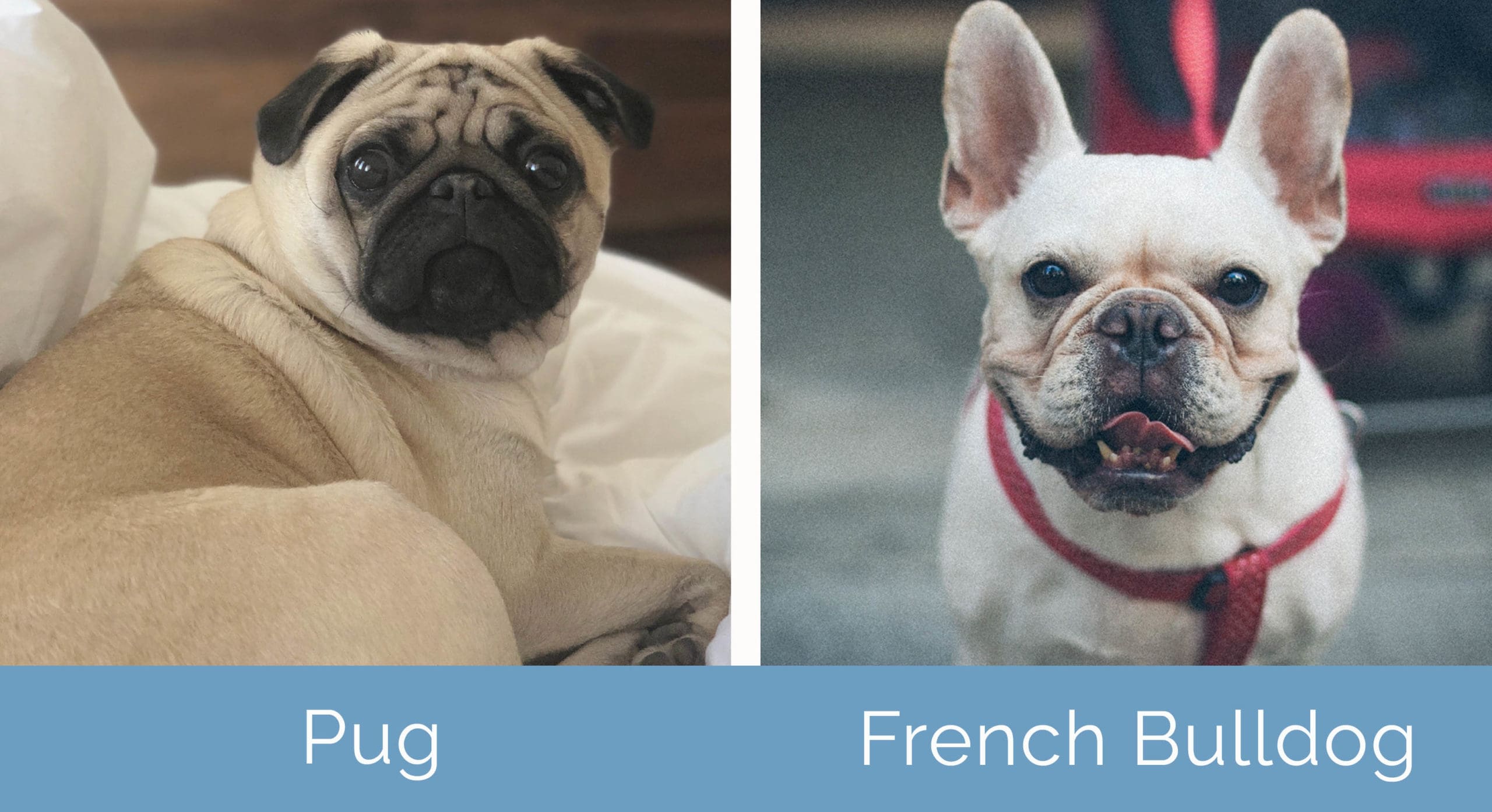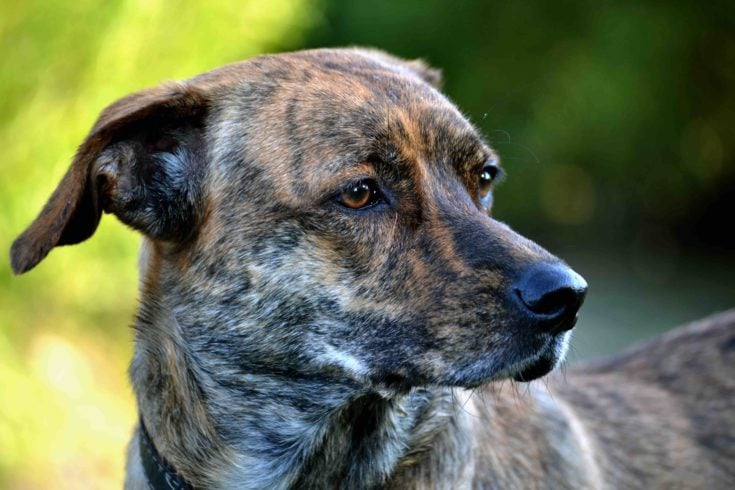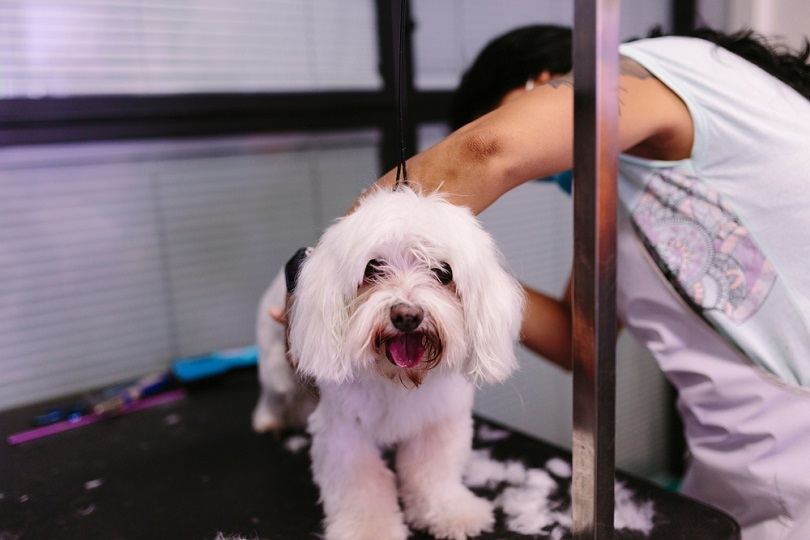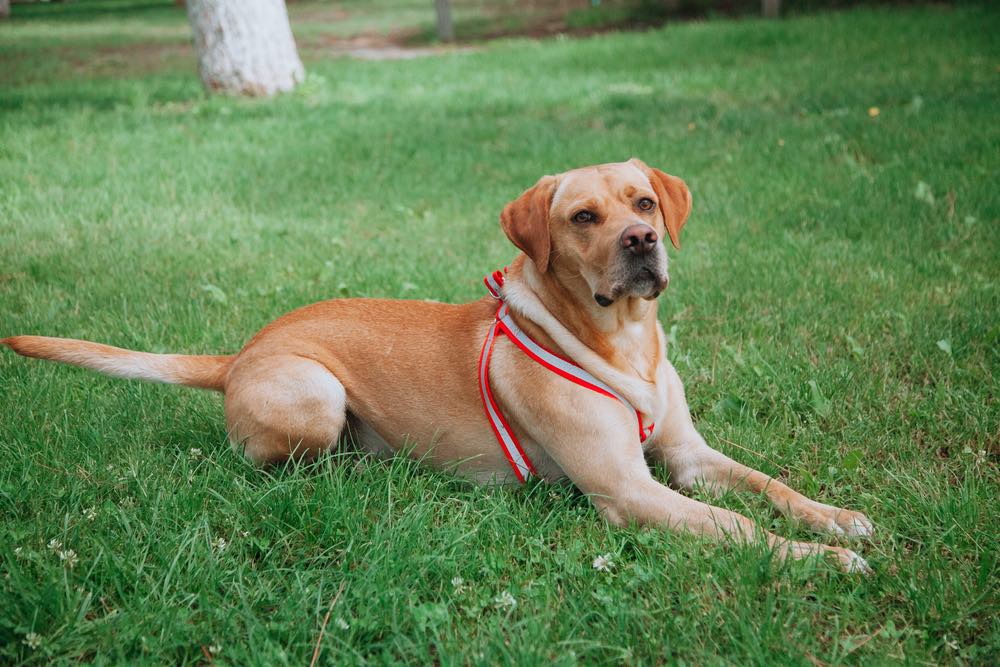Pug vs French Bulldog: Which Breed is Right for You?

Updated on
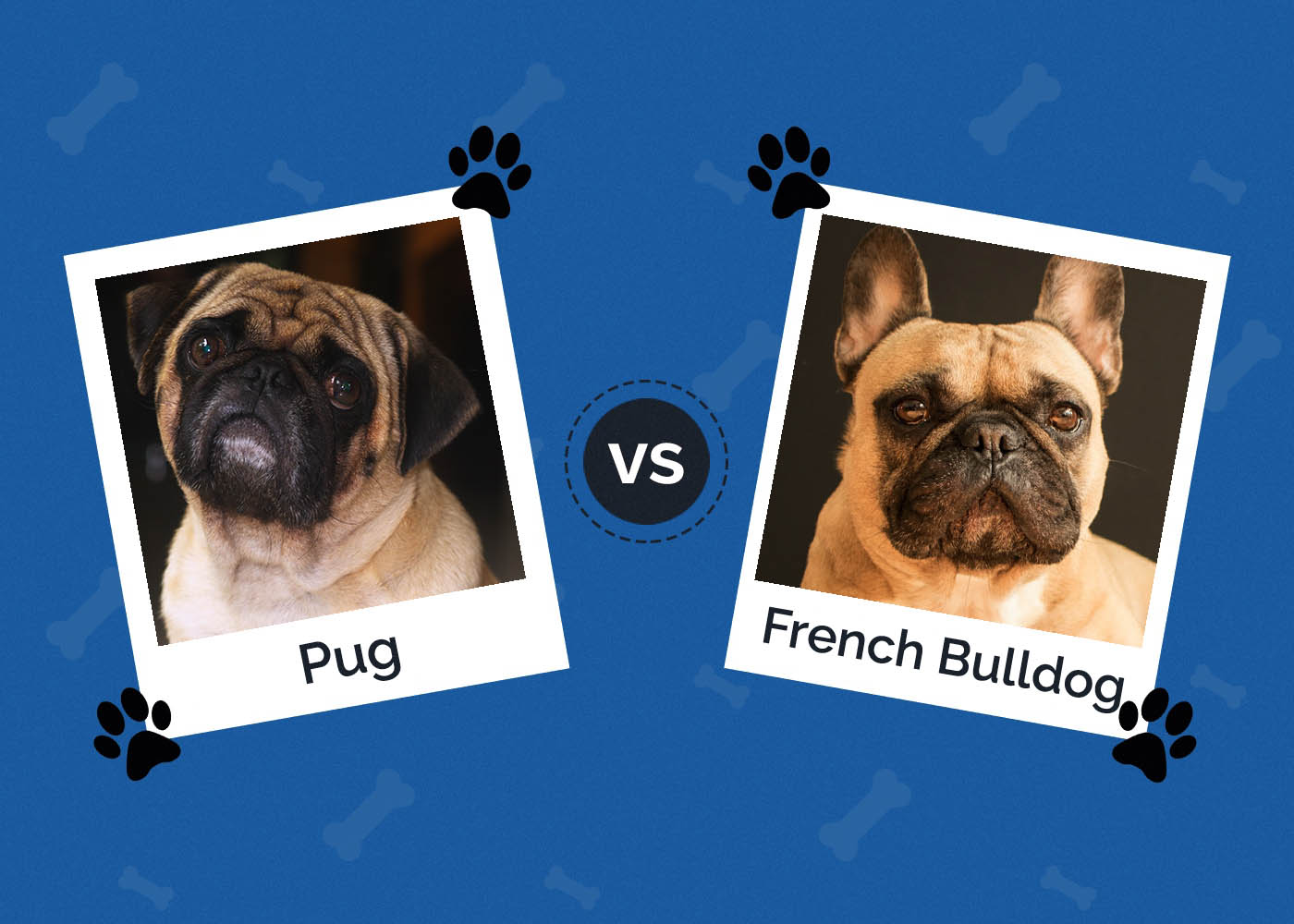
Is there anything cuter than a beefy, compact pup with a smooshed snout and a spunky soul? Probably not. When it comes to comparing the French Bulldog to the Pug, you may have quite a bit of trouble deciding which is a better companion.
Both breeds have brought much entertainment and happiness to owners everywhere. With so many similarities, they are just different enough to tip the scales toward one side or another. You may know people who swear by one breed hand over fist, but which wins your award for the best? Let’s look at the good, the bad, and all that’s in-between so that you can decide for yourself.
Visual Differences
These two breeds are very close in size and have many resemblances. They are both listed in the brachycephalic breed category. That means they have an ultra-short muzzle, which leads to breathing problems and potentially more severe health issues than dogs with standard nasal passages.
At a Glance
Let’s look at the key points of each breed.
- Average Height (adult): 10–14 inches
- Average Weight (adult): 14–18 pounds
- Lifespan: 12–14 years
- Exercise: Daily, 40 min
- Grooming needs: Medium
- Family-friendly: Yes
- Dog-friendly: Often
- Trainability: Good
- Average Height (adult): 11–12 inches
- Average Weight (adult): 16-24 pounds
- Lifespan: 9–11 years
- Exercise: Daily, 1 hr
- Grooming needs: Medium
- Family-friendly: Yes
- Dog-friendly: Often
- Trainability: Good

Appearance
While the Pug and the French Bulldog have buggy eyes and a flat face, there is one noticeable difference. Pugs have rounded, floppy ears. French Bulldogs have the famous “bat ears” that stand naturally erect and are usually quite large in proportion to their heads.
Both breeds have wrinkly scruff with adorable rolls to squeeze. But they have their differences, too. Pugs have dense coats from their faces down to curly pig-like tails, while French Bulldogs have sleeker coats and stubby docked nubs. A Pug’s undercoat continuously grows, causing constant shedding, and Frenchies shed much less, only losing their undercoats twice a year.
Then come color variations between them. Pugs are very recognizable and are only available in four coats: black, apricot, fawn, and silver fawn. Frenchies have a wider variety, having multiple patterns and colors. They vary between bridle, pied, cream, fawn, blue, chocolate, and black.
Personality Comparison
Both breeds are brilliantly fun-loving and goofy in spirit. They are known far and wide for their human-like personalities and interactive animation. Even when they are at their craziest during play, they are manageable. Their size allows them to be a perfect candidate for apartment living.
Because they are smaller dogs, they can be stubborn and difficult to train. On the upside, they are both eager to please and moderately intelligent. While they may take longer to learn, they will eventually catch on.
Both dogs are incredibly affectionate and loyal to their owners. However, the spunkiness of a French Bulldog can cause it to be less compatible with other pets or small children. That is not true for the Pugs; they love kids and get along famously with other animals.
Both dogs are prone to snoring due to their flat faces. They will make you laugh as they snort with excitement or make funny sounds during sleep. They can also be vocal.
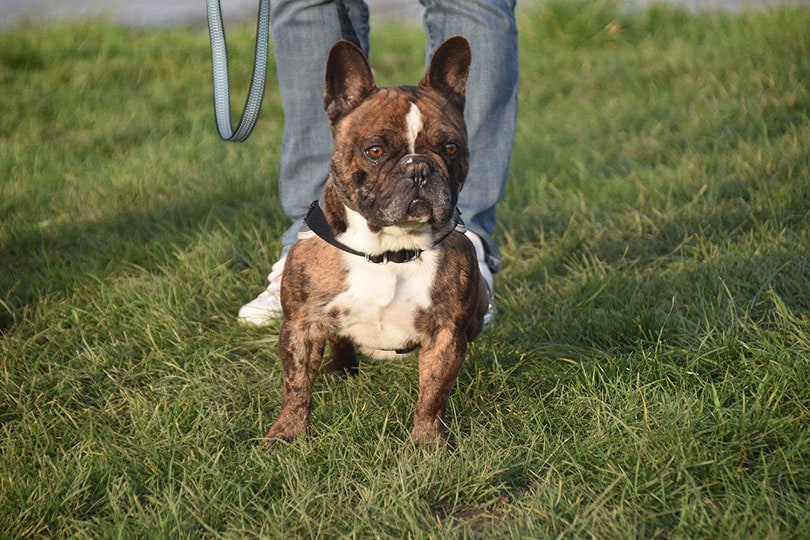
Frenchies are slightly more active than a Pug. Pugs may be up for romping around, but they love to follow up with frequent naps. Frenchies, on the other hand, can keep up with fun activities with fewer breaks.
Even though the Pug is enormously friendly, they make better watchdogs by a minor margin. They are quick to alert their families of any threat and are ready to act. They aren’t very threatening due to their size and stature, but that won’t stop them.
Both make excellent family additions, being neither aloof nor disengaged. They will try to include themselves in all the activities you enjoy. The Frenchie and Pug are ecstatic to go on car rides, vacations, day trips, and walks with you. They genuinely enjoy being involved in as much of your day as you will allow.
Individual Well-Being
French Bulldogs have a lifespan of 9 to 11 years, which is considered quite short for a smaller dog. Pug’s lifespan exceeds this, averaging 12-14 years.
Because they’re both brachycephalic dogs, they’re vulnerable to several health conditions. They cannot be left out in high temperatures for extended periods. Due to their facial construction, they can’t pant properly. It can cause heatstroke and breathing difficulties, which can lead to death.
Pugs can suffer Pug Dog Encephalitis. It is a disease of the central nervous system, which is progressive and will ultimately cause their demise. It starts symptomatically as seizures, abnormal gait, and eventual blindness.
On top of respiratory-related diseases, both Pugs and French Bulldogs can also suffer from a wide selection of genetic conditions. These include spinal disorders, eye issues, and joint conditions.
Frenchies can also have allergy problems. They have a good chance of developing sensitivities to food and surrounding irritants. Be ready for special diets as well as protection from environmental allergens.
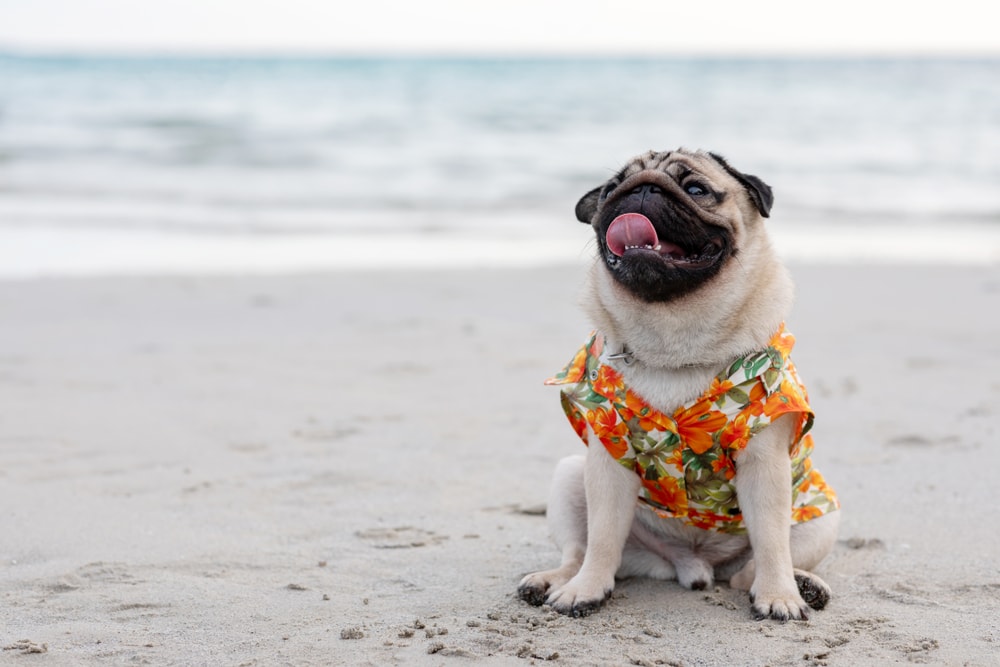
Breeding & Pricing
There is no contest here; French Bulldogs are much more expensive to breed. That, in turn, makes them more costly to purchase. Frenchies require a breeder who has extreme knowledge, experience, and adequate resources.
French Bulldogs cannot get pregnant organically. The females must undergo artificial insemination, as they have too narrow of a gait to breed naturally. Their slender hips also prevent natural labor, so whelping isn’t an option. They must undergo a cesarean surgery, costing a pretty penny for breeders as well.
Because of the difficulty and intricacy of the entire process, they come with a hefty price tag. The average cost of a French Bulldog is $2,200. However, it can range anywhere from $1,500–$10,000. That depends on the breeding quality, color rarity, and other expenses.
Pugs, thankfully, do not have the same difficulties. Mothers can have puppies with no issue. You can expect to pay within a general range of $600–$1,500 for a pet. If you want to purchase a dog with papers, expect to pay upwards of $6,000.
Also, remember that each of these breeds could need regular medications, expensive specialty foods, or run pricy vet bills. You need to be sure you figure in the cost beforehand.
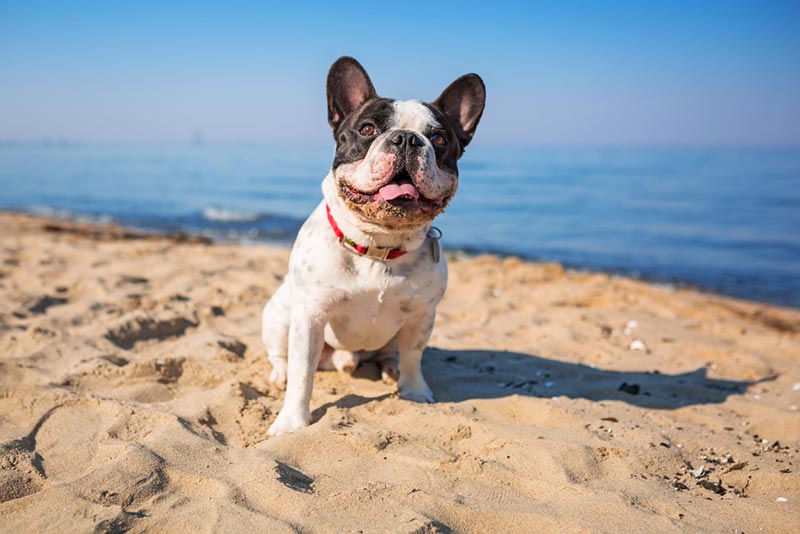
And The Winner Is…
Is it possible to pick? The winner will be entirely dependent on your personal preference and nothing more. The Pug and Frenchie share many terrific traits but differ enough to make your decision easier.
You may be on Team Frenchie if you are single and can spoil them as the only pet. You can bring them on all your adventures, dress them up with cute accessories, and love them endlessly. If you have the proper financial means to care for them both upfront and in the long run, it may be no contest for you.
You may be on Team Pug if you have small children or other pets. They will equally be willing to accompany you anywhere you may go and socialize with your company. They aren’t quite as hard on the wallet initially, but health issues can require regular medication. So, be aware that there could be unforeseen expenses later.
No matter which breed you think is the victor here, they both have so much love to give. So, take your number one pick and start your companion search!
- If you like both of these dogs and can’t decide between them, check out their adorable crossbreed, the Frenchie Pug!
Featured Image Credit: (L) rangtheclick, Shutterstock | (R) Alexandru Sofronie, Shutterstock

